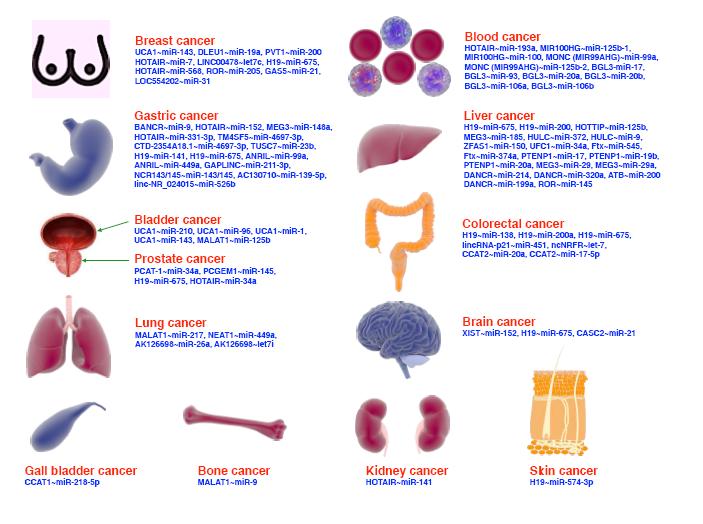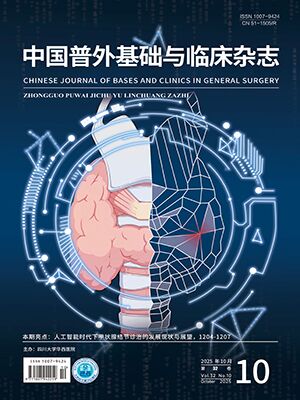| 1. |
GBD 2017 Disease and Injury Incidence and Prevalence Collaborators. Global, regional, and national incidence, prevalence, and years lived with disability for 354 diseases and injuries for 195 countries and territories, 1990-2017: a systematic analysis for the Global Burden of Disease Study 2017. Lancet, 2018, 392(10159): 1789-1858.
|
| 2. |
Miranda-Filho A, Piñeros M, Ferreccio C, et al. Gallbladder and extrahepatic bile duct cancers in the Americas: incidence and mortality patterns and trends. Int J Cancer, 2020, 147(4): 978-989.
|
| 3. |
Fong ZV, Brownlee SA, Qadan M, et al. The clinical management of cholangiocarcinoma in the United States and Europe: a comprehensive and evidence-based comparison of guidelines. Ann Surg Oncol, 2021, 28(5): 2660-2674.
|
| 4. |
Sallinen V, Sirén J, Mäkisalo H, et al. Differences in prognostic factors and recurrence patterns after curative-intent resection of perihilar and distal cholangiocarcinomas. Scand J Surg, 2020, 109(3): 219-227.
|
| 5. |
van Keulen AM, Franssen S, van der Geest LG, et al. Nationwide treatment and outcomes of perihilar cholangiocarcinoma. Liver Int, 2021, 41(8): 1945-1953.
|
| 6. |
Bismuth H, Nakache R, Diamond T. Management strategies in resection for hilar cholangiocarcinoma. Ann Surg, 1992, 215(1): 31-38.
|
| 7. |
Xin Y, Liu Q, Zhang J, et al. Hilar cholangiocarcinoma: value of high-resolution enhanced magnetic resonance imaging for preoperative evaluation. J Cancer Res Ther, 2020, 16(7): 1634-1640.
|
| 8. |
Lee DH. Current status and recent update of imaging evaluation for peri-hilar cholangiocarcinoma. Taehan Yongsang Uihakhoe Chi, 2021, 82(2): 298-314.
|
| 9. |
Yoo J, Lee JM, Kang HJ, et al. Comparison between contrast-enhanced computed tomography and contrast-enhanced magnetic resonance imaging with magnetic resonance cholangiopancreatography for resectability assessment in extrahepatic cholangiocarcinoma. Korean J Radiol, 2023, 24(10): 983-995.
|
| 10. |
Wang GX, Ge XD, Zhang D, et al. MRCP combined with CT promotes the differentiation of benign and malignant distal bile duct strictures. Front Oncol, 2021, 11: 683869. doi: 10.3389/fonc.2021.683869.
|
| 11. |
郑婉静, 熊美连, 陈晓丹, 等. 钆贝葡胺多期增强MRI对肿块型胆管细胞癌和不典型肝脓肿的鉴别诊断. 中国医学影像学杂志, 2022, 30(5): 474-479, 489.
|
| 12. |
丁薇, 成友华, 李俊余, 等. MRCP联合DWI序列诊断肝门胆管癌的应用价值. 临床和实验医学杂志, 2022, 21(15): 1671-1674.
|
| 13. |
姜继华, 姜仁鸦, 汪正飞, 等. 肝门部胆管癌患者经内镜下射频消融和金属支架植入治疗后胆道感染病原菌与影响因素. 中华医院感染学杂志, 2020, 30(18): 2794-2798.
|
| 14. |
Liang CY, Chen MD, Zhao XX, et al. Multiple mathematical models of diffusion-weighted magnetic resonance imaging combined with prognostic factors for assessing the response to neoadjuvant chemotherapy and radiation therapy in locally advanced rectal cancer. Eur J Radiol, 2019, 110: 249-255.
|
| 15. |
Park MJ, Kim YK, Lim S, et al. Hilar cholangiocarcinoma: value of adding DW imaging to gadoxetic acid-enhanced MR imaging with MR cholangiopancreatography for preoperative evaluation. Radiology, 2014, 270(3): 768-776.
|
| 16. |
Dar FS, Abbas Z, Ahmed I, et al. National guidelines for the diagnosis and treatment of hilar cholangiocarcinoma. World J Gastroenterol, 2024, 30(9): 1018-1042.
|
| 17. |
Drews J, Baar LC, Schmeisl T, et al. Biliary drainage in palliative and curative intent European patients with hilar cholangiocarcinoma and malignant hilar obstruction: a retrospective single center analysis. BMC Gastroenterol, 2024, 24(1): 359. doi: 10.1186/s12876-024-03429-y.
|
| 18. |
He M, Song Y, Li H, et al. Histogram analysis comparison of monoexponential, advanced diffusion-weighted imaging, and dynamic contrast-enhanced MRI for differentiating borderline from malignant epithelial ovarian tumors. J Magn Reson Imaging, 2020, 52(1): 257-268.
|
| 19. |
Inchingolo R, Maino C, Gatti M, et al. Gadoxetic acid magnetic-enhanced resonance imaging in the diagnosis of cholangiocarcinoma. World J Gastroenterol, 2020, 26(29): 4261-4271.
|
| 20. |
Yamada S, Morine Y, Imura S, et al. Prognostic prediction of apparent diffusion coefficient obtained by diffusion-weighted MRI in mass-forming intrahepatic cholangiocarcinoma. J Hepatobiliary Pancreat Sci, 2020, 27(7): 388-395.
|
| 21. |
Raspe J, Harder FN, Rupp S, et al. Retrospective motion artifact reduction by spatial scaling of liver diffusion-weighted images. Tomography, 2023, 9(5): 1839-1856.
|
| 22. |
Perucho JAU, Chiu KWH, Wong EMF, et al. Diffusion-weighted magnetic resonance imaging of primary cervical cancer in the detection of sub-centimetre metastatic lymph nodes. Cancer Imaging, 2020, 20(1): 27. doi: 10.1186/s40644-020-00303-4.
|
| 23. |
Sbaraglia M, Bellan E, Dei Tos AP. The 2020 WHO classification of soft tissue tumours: news and perspectives. Pathologica, 2021, 113(2): 70-84.
|
| 24. |
吴鑫, 黄新荞, 舒健, 等. 扩散加权成像评估肝外胆管癌血管生成及分化程度. 磁共振成像, 2021, 12(5): 73-76.
|
| 25. |
Lu J, Li B, Li FY, et al. Long-term outcome and prognostic factors of intrahepatic cholangiocarcinoma involving the hepatic hilus versus hilar cholangiocarcinoma after curative-intent resection: should they be recognized as perihilar cholangiocarcinoma or differentiated?. Eur J Surg Oncol, 2019, 45(11): 2173-2179.
|
| 26. |
Nagino M, Ebata T, Yokoyama Y, et al. Evolution of surgical treatment for perihilar cholangiocarcinoma: a single-center 34-year review of 574 consecutive resections. Ann Surg, 2013, 258(1): 129-140.
|
| 27. |
Hu HJ, Jin YW, Shrestha A, et al. Predictive factors of early recurrence after R0 resection of hilar cholangiocarcinoma: a single institution experience in China. Cancer Med, 2019, 8(4): 1567-1575.
|
| 28. |
Yoo J, Kim JH, Bae JS, et al. Prediction of prognosis and resectability using MR imaging, clinical, and histopathological findings in patients with perihilar cholangiocarcinoma. Abdom Radiol (NY), 2021, 46(9): 4159-4169.
|
| 29. |
Calthorpe L, Rashidian N, Cacciaguerra AB, et al. Using the comprehensive complication index to rethink the ISGLS criteria for post-hepatectomy liver failure in an international cohort of major hepatectomies. Ann Surg, 2023, 277(3): e592-e596. doi: 10.1097/SLA.0000000000005338.
|
| 30. |
Lv TR, Ma WJ, Liu F, et al. Is conventional functional liver remnant volume higher than 40% still sufficient to prevent post-hepatectomy liver failure in jaundiced patients with hilar cholangiocarcinoma? A single-center experience in China. Cancer Med, 2024, 13(13): e7342. doi: 10.1002/cam4.7342.
|
| 31. |
沙新杰, 夏晓亮. 磁共振成像增强扫描联合弥散加权成像评估良恶性肝脏肿瘤价值分析. 实用肝脏病杂志, 2025, 28(3): 438-441.
|
| 32. |
卢灿亮, 张超, 许业传, 等. Bismuth-Corlette Ⅲ、Ⅳ型肝门部胆管癌手术治疗方式的选择. 中华肝胆外科杂志, 2022, 28(8): 597-602.
|




